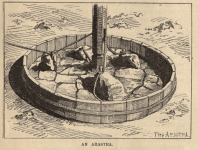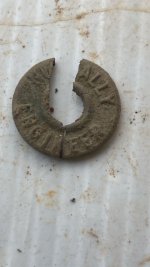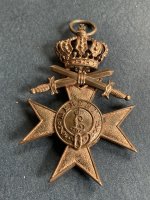Old Bookaroo
Silver Member
- Dec 4, 2008
- 4,318
- 3,510
Sonora Antiquities.
{Lieut. Flipper in Nogales Herald.}
While Padre Niza, Coronado[,] Espejos[,] Father Kino and others were exploring Arizona and New Mexico, the Spaniards were pushing across northern Mexico west from Tampico and other points on the Gulf of Mexico. They founded Monclova and the emission and presidio of San Vicente in the State of Coahuila, the town of Santa Rosa, in Chihuahua, discovered and worked the Santa Rosa mines in the Sierra Rica near the last mentioned town; the towns of Julimes, San Pablo, Santa Cruz de Rosales, Aldama, and San Felipe el Real, now the City of Chihuahua in the State of the same name. The site of San Felipe el Real was some fifteen miles southeast of the present City of Chihuahua, to which location the former town was moved. Chihuahua was early made a center of exploration and many expeditions were sent out from there. El Paso, Casas Grandes (the modern pueblo, Galeana and all the older towns in western and northwestern Chihuahua were founded by emigrants whose last starting point was Chihuahua.
One of the oldest towns founded in this way was Santa Rosa de Cosihuririachi, ninety miles west of Chihuahua. Cosihuririachi soon became famous for its rich silver mines, the Candelaria being the first mine discovered and worked there and yet being profitable worked by an American Company.
Cosihuririachi (the town of the standing post in the Tarahumar dialect) was made “real de minas” that is the seat of the Mining Deputation, and afterwards became the political and religious capital of tall the northwest country. From there, as from Chihuahua in earlier days, expeditions were sent out. All the older mining districts in western Chihuahua were discovered in this way and populated and developed by these adventurous hordes.
These expeditions extended their explorations westward and Guaynopa, Santa Fe de Rodrigues and numerous others were discovered and became flourishing towns or mining camps. Guaynopa has probably never been found though there are voluminous records of everything pertaining to that once famous mining district. The district now called Guaynopa is positively known to be Santa Fe de Rodriguez, another old mining district as famous in its day as Guaynopa.
Santa Fe de Rodriguez is the most western of the old minerals or mining camps in Chihuahua and the next step brings us into Sonora. Dumps here and there, on and off the trail, old rastras (Americans, many of whom ought to know better, persists in saying arrastras. There is no such word in the Spanish language. If they intend to say arrastra, it is a verb, third person singular number, present tense, indicative mood, and means he, she or it drags. The mill grinding ore is called rastra by people who speak correctly the language of Cervantes,) ruins of houses, old acequias or irrigation ditches, fruit trees, dams, slag piles, prospects, etc., enable one to trace them as they proceed westward with the “star of Empire.”
The first ruins encountered on the Sonora side of the summit of the Sierra Madre are at a place called “Iglesia.” The ruins of a large, well built church exist there, to-day the solitary relic of a perhaps once large and prosperous town. No other ruins of any kind can be recognized any where in the vicinity and even the name of this town has disappeared from the pages of history. It is known to-day simply as “Iglesia,” the church.
Coming still farther west we reach the “mesa de Satachi,” a beautiful country made interesting by the runs that exists there. Farther west we reach the Nacori River at a point where once stood the town of Mochopa, in a beautiful, broad and fertile valley. This must have been a town of much importance and was perhaps the center of extensive mining and agricultural industries, as is evidenced by the ruins, the old acequias, slag piles, rastras, fruit trees, etc. It decayed as did almost everything the Spaniard touched, or was destroyed by the ruthless Apache.
A new town was founded higher up the River and still exists under the eupheoneus [sic] name of Nacori Chico, a small walled town of no importance but situated in the loveliest spot in all Sonora and the only walled in town to be found in Sonora. Some four leagues west of Nacori on the Bacadehuachi River is the town of the same name, a pretty little village nestling in a beautiful valley, walled in by timber crowned mountains and famous for its cattle and tobacco, the best produced in the state.
The handsomest church in Sonora is perhaps the church at Bacadehuachi, which contrary to the custom of the country in such matters is kept in excellent condition. About four leagues west, on the Bavispe River, is the town of Granadas, a modern town founded some fifty years ago by seven brothers and their families, and contains at present some two thousand souls most of whom are relatives.
Up the river is the old town of Guasabas, a prosperous agricultural town of some importance. Further up the river, some seven leagues is the old Oputa Indian town also called Oputa. Down the river from Granadas are the ruins of an old town [whose] name died with it. It is known to-day as “Pueblo Viejo,” the old town. Farther down the river is the old ranch of Badesi, among whose ruins Capt. Lawton overtook Geronimo and captured all his stock and camp equipment two years ago.
Arizona Weekly Enterprise [Florence, Pinal County, Arizona] 5 January 1889 - Volume VIII. Number 40.
[The masthead reads “1888” — someone drew a pencil line through the final “8” and wrote “9.” Apparently for several days the typesetter didn’t update the slug with the new year.]
----- o0o -----
Editor’s Notes: Henry O. Flipper, the first Black graduate of West Point, became a well-known mining engineer, an expert on Mexican mining law, and a consultant to W.C. Greene, who sent Flipper to Spain to research the Lost Tayopa Mine.
Those interested in Flipper’s history should review
Lost Mines in Mexico - An Important Discovery by H.O. Flipper August 21, 1889 (treasurenet.com)
Another view of his court martial may be found in The Fall of a Black Army Officer; Racism and the Myth of Henry O. Flipper by Charles M. Robinson, III (2008).
Capt. Henry Lawton, mentioned at the end of the article, chased Geronimo across the Sierra Madres with as much success as Black Jack Pershing enjoyed in the next century pursuing Pancho Villa through northern Mexico. Lawton had enlisted in the Union Army during the Civil War, earned a commission, and was awarded the Medal of Honor. Major General Lawton died in combat in the Philippines in December 1899.
-----
-----
Good luck to all,
The Old Bookaroo
Last edited:






